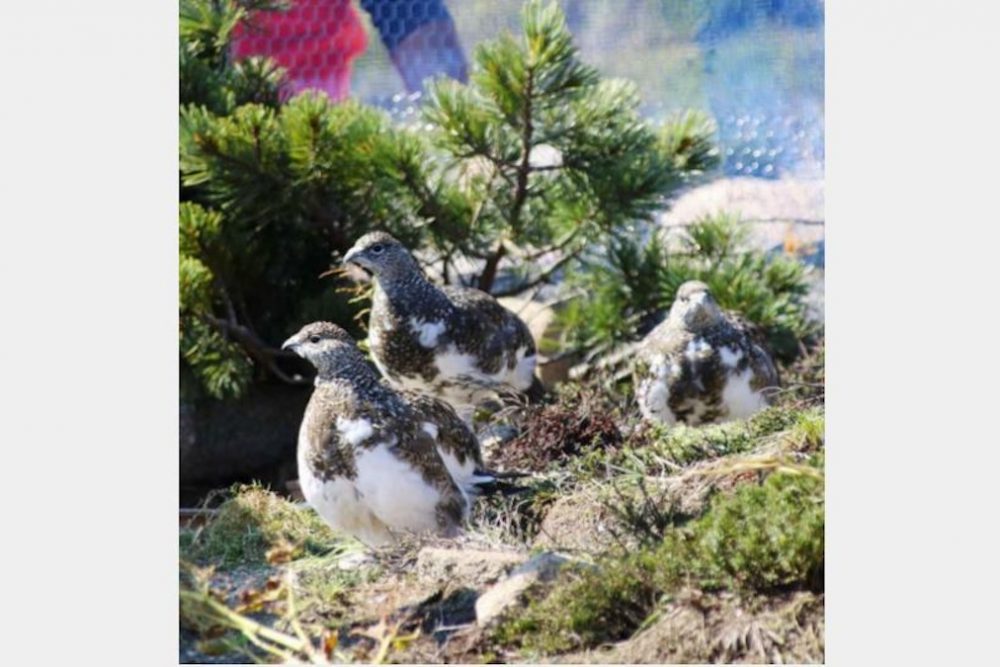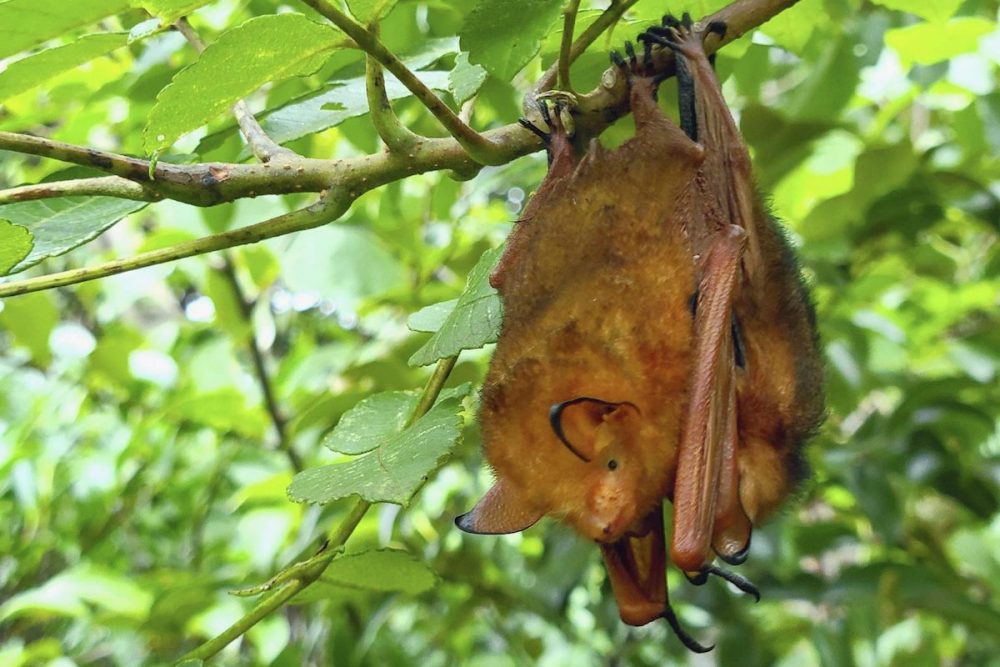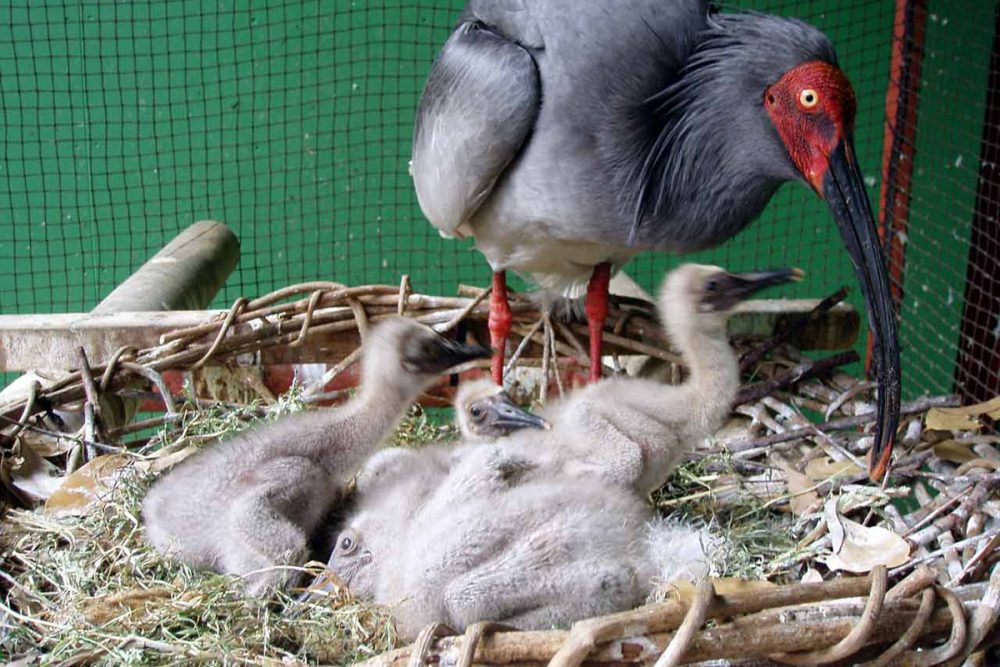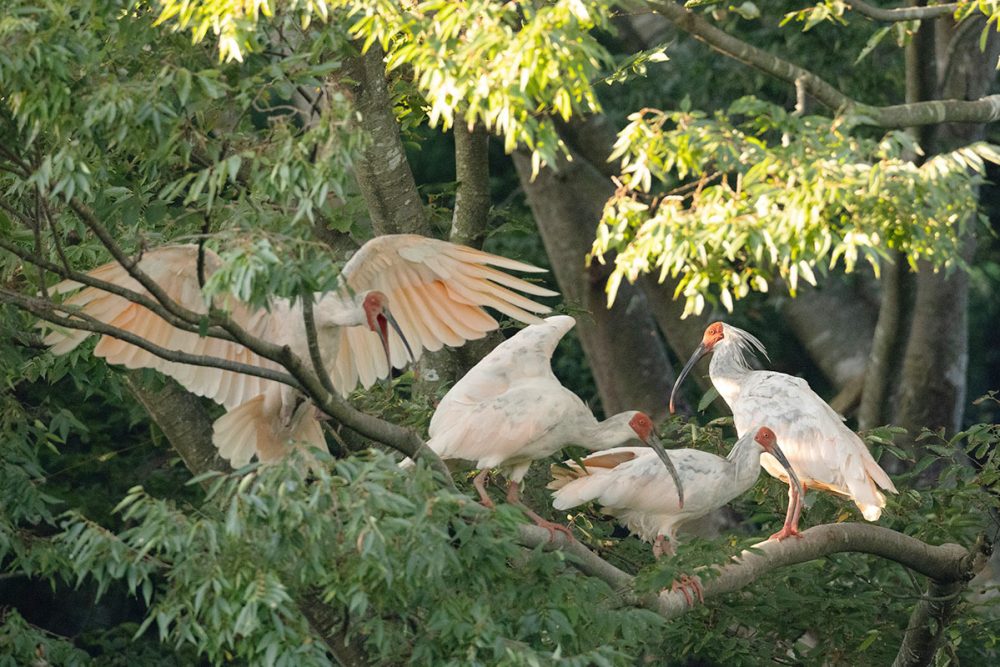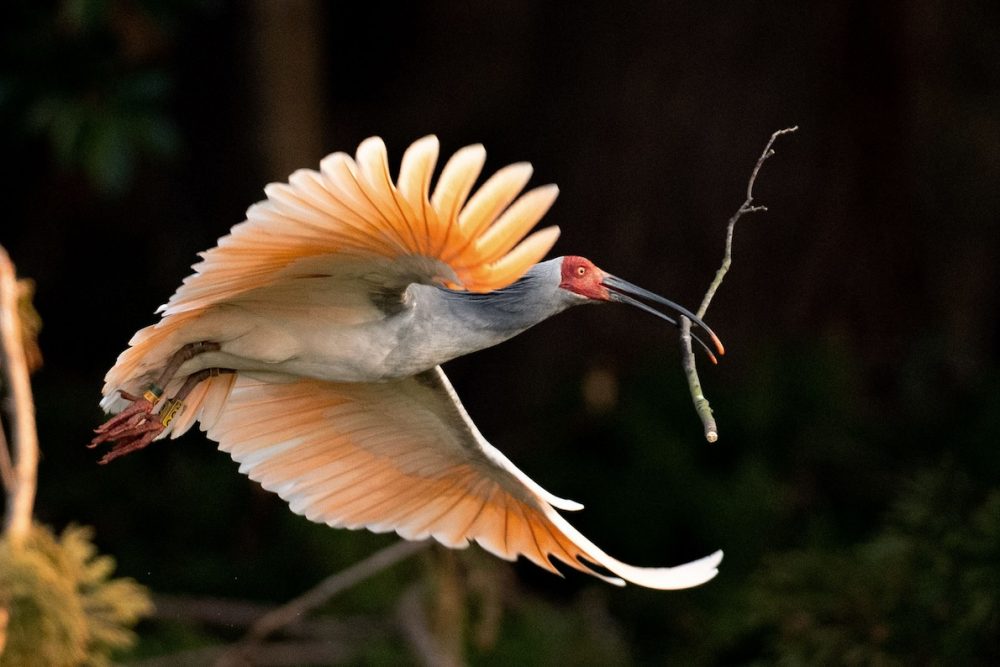Sado Wildlife in Focus | Is Overcrowding Responsible for the Recent Decline in Crested Ibis Numbers?
The population of endangered crested ibis has taken a downward trend. Photojournalist Fumie Oyama discusses possible explanations in his latest installment.

このページを 日本語 で読む
The mating season of the Japanese crested ibis, a once-extinct bird designated as a national treasure, has approached its final stage. Ibis couples can be seen busily preparing to build their nests.
Bird Couples Moving in Together
In my last essay, I explained the courtship behaviors of the crested ibis. The male, whose feathers have turned black, expresses affection by repeatedly offering small branches and dried leaves to a female of interest.
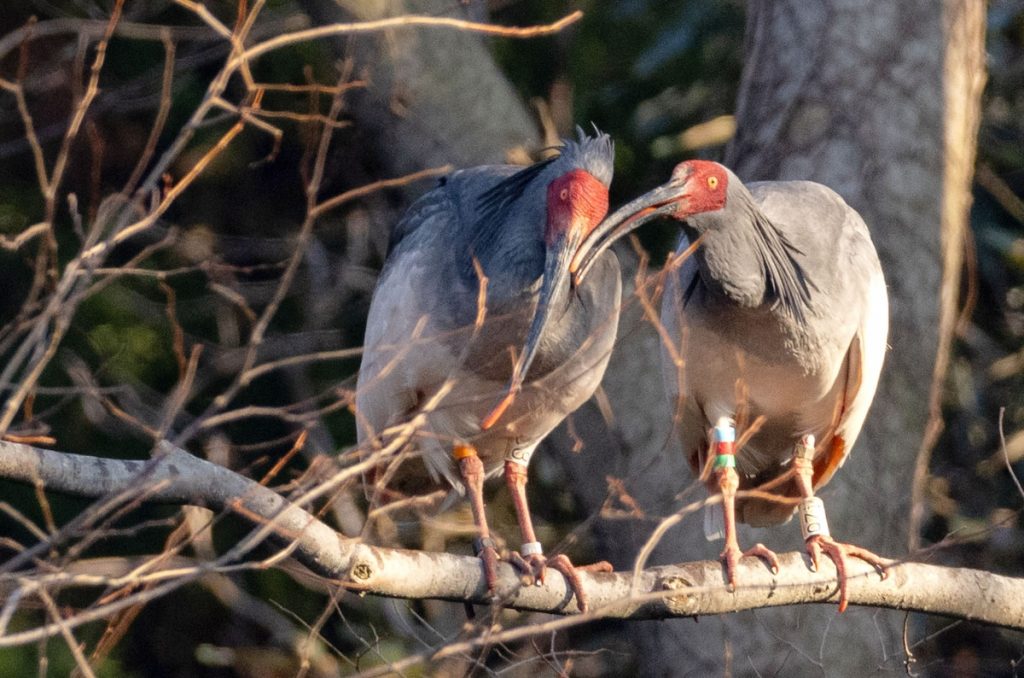
Once the birds form a couple and their affection grows through these behaviors, they begin searching for a nesting site that will become their new home.
First Observed Decline in Population
For someone like me who has been a constant observer of the crested ibis, a piece of recent news came as a shock. The Ministry of the Environment announced that as of December 2023, the number of crested ibises in the wild had decreased by 13 compared to the end of the previous year.
The current total stands at an estimated 532 birds. This marks the first decrease since the birds were first released back into the wild in 2008.
Of these, 152 were birds bred in captivity and released into the wild. The other 380 were born in the wild. Since the start of releases, the population has been on a steady incline. So what is behind this recent drop?

First, breeding itself was an issue. In 2023, 165 ibis couples built nests – about the same number as the previous year. But only 27 couples successfully reproduced, totaling only 55 chicks. The number of hatched birds and the percentage of those leaving the nest stood at roughly half compared to 2022 numbers. 2023's disappointing results were the second-lowest numbers on record.
Overcrowding as a Cause?
One possible reason for the decrease in population is the sheer number of ibis settling nearby release sites. As the ibis grow in population, they become easier targets for martens and crows, their natural predators.
Another plausible explanation is the proximity of the birds. Ibis are sensitive animals. The stress of having other birds nearby may have made it difficult for them to breed.
Likewise, the low hatching rate could have been due to inadequate food intake during the crucial breeding period, leading to nutritional deficiencies.
Ministry To Tweak Releases
The Ministry of the Environment has opted to implement new measures to address issues related to the bird's breeding environment.
In June 2024, birds will be released into the wild on the northern part of Sado Island. This new location is farther away from the Ministry's facility and its acclimation cages. The upcoming release will mark the first time the birds will be released in this new area.
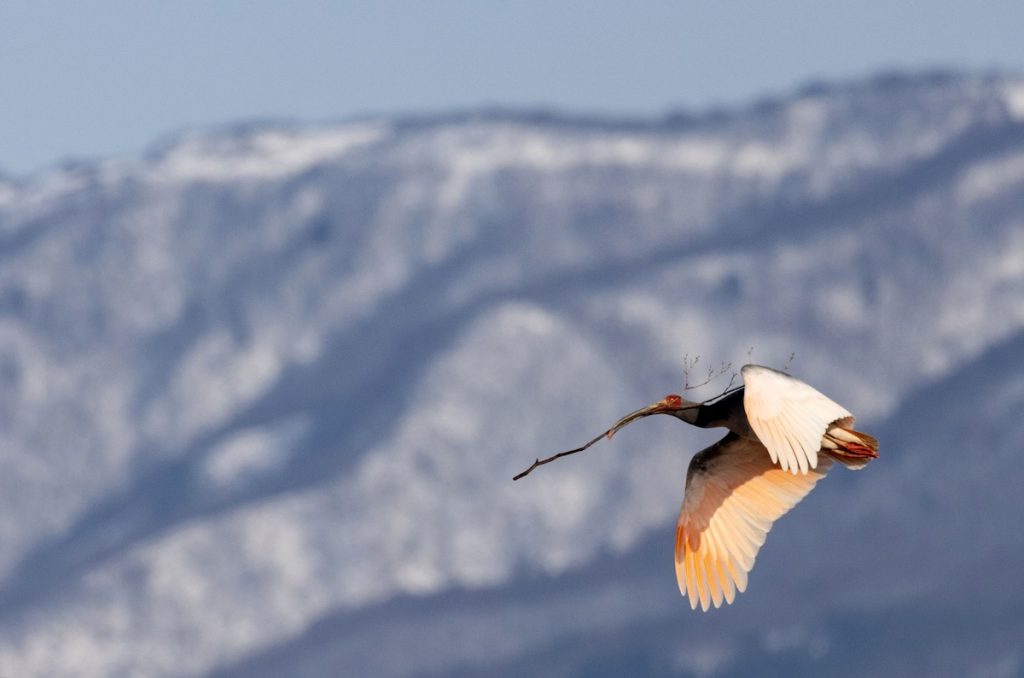
Ibis trample young rice in fields during planting season. As such, they have historically been considered pests. Explaining the Ministry's plans for the release of the birds will be crucial in the local community.
Ensuring the survival of the ibis in the wild depends not only on suitable feeding grounds. Understanding and kind-hearted acceptance on the part of local residents are also required.
Click here to read more Sado Wildlife in Focus photo essays by photojournalist Fumie Oyama.
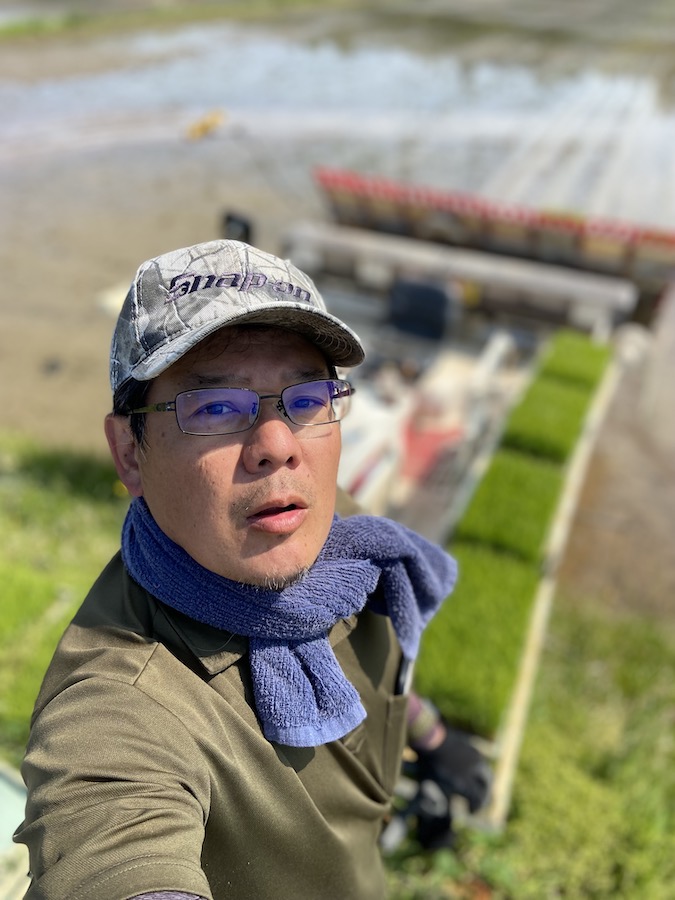
Fumie Oyama is a two-time winner of the Japan Newspaper Publishers & Editors Association Award as a photographer for the Sankei Shimbun. After covering the reintroduction of the crested ibis to the wild for 11 years, Oyama left the company in 2020 to move to Sado Island. There, he continues to photograph the ibis and other wildlife while engaging in farming. He currently promotes the charms of Sado Island as a photojournalist. Follow Fumie Oyama on Instagram.
このページを 日本語 で読む






